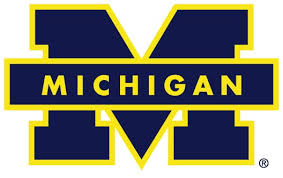Aneurysmal Subarachnoid Hemorrhage Trial RandOmizing Heparin
| Status: | Recruiting |
|---|---|
| Conditions: | Cardiology, Neurology, Psychiatric, Hematology, Hematology |
| Therapuetic Areas: | Cardiology / Vascular Diseases, Hematology, Neurology, Psychiatry / Psychology |
| Healthy: | No |
| Age Range: | 18 - 70 |
| Updated: | 10/27/2017 |
| Start Date: | April 2016 |
| End Date: | December 2020 |
| Contact: | Ann Jerde, RN |
| Email: | ann.jerde@louisville.edu |
| Phone: | 502-438-8787 |
A Blind-adjudication Multi-center Phase II Randomized Clinical Trial of Continuous Low-dose Intravenous Heparin Therapy in Coiled Low-grade Aneurysmal Subarachnoid Hemorrhage Patients With Significant Hemorrhage Burden
A Blind-adjudication Multi-center Phase II Randomized Clinical Trial of Continuous Low-dose
Intravenous Heparin Therapy in Coiled Low-grade Aneurysmal Subarachnoid Hemorrhage Patients
with Significant Hemorrhage Burden.
Intravenous Heparin Therapy in Coiled Low-grade Aneurysmal Subarachnoid Hemorrhage Patients
with Significant Hemorrhage Burden.
The primary objective of this study is to investigate the safety and clinical effect of a
continuous low-dose intravenous unfractionated heparin (LDIVH) infusion for the prevention of
aneurysmal subarachnoid hemorrhage (aSAH) induced neurocognitive dysfunction and other
delayed neurological deficits.
Additionally, increased blood and CSF levels of certain inflammatory biomarkers (IL-6, hsCRP,
etc) have been correlated to aSAH patients with poor clinical outcomes. Unfractionated
heparin (UFH) has known anti-inflammatory actions. As a result, a secondary objective of this
study will be to evaluate whether LDIVH can reduce blood and CSF inflammatory biomarkers
levels compared to controls and whether there is any association between inflammatory
biomarker levels and cognitive outcomes in aSAH.
continuous low-dose intravenous unfractionated heparin (LDIVH) infusion for the prevention of
aneurysmal subarachnoid hemorrhage (aSAH) induced neurocognitive dysfunction and other
delayed neurological deficits.
Additionally, increased blood and CSF levels of certain inflammatory biomarkers (IL-6, hsCRP,
etc) have been correlated to aSAH patients with poor clinical outcomes. Unfractionated
heparin (UFH) has known anti-inflammatory actions. As a result, a secondary objective of this
study will be to evaluate whether LDIVH can reduce blood and CSF inflammatory biomarkers
levels compared to controls and whether there is any association between inflammatory
biomarker levels and cognitive outcomes in aSAH.
Inclusion Criteria:
1. Age ≥ 18 and ≤ 70 years
2. Historical modified Rankin Scale Score 0-1
3. WFNS SAH Scale grade ≤ 2, due to a spontaneous subarachnoid hemorrhage attributable to
a ruptured cerebral aneurysm. Cranial nerve deficit (e.g. CN III paresis) is
permissible even for WFNS grade 2.
• Initial WFNS grade may be determined at admission or enrollment, preferably after
the patient's mental status has been optimized by resuscitation and interval treatment
of hydrocephalus (i.e., placement of intraventricular catheter) or
reversal/wearing-off of sedating medications used commonly during patient transfers
and transport or procedure related anesthesia.
4. Admission head CT showing modified Fisher grade 3 aSAH primarily in the supratentorial
space. Snapshot images of up to four relevant axial cuts from the admission head CT
will need to be uploaded via the imaging database to confirm the modified Fisher grade
3 eligibility of the potential subject prior to enrollment. Minimal intraventricular
hemorrhage is acceptable.
The Modified Fisher CT rating scale: Grade 1 (minimal or diffuse thing SAH without
IVH); Grade 2 (minimal or thin SAH with IVH), Grade 3 (thick cisternal clot without
IVH), Grade 4 (thick cisternal clot with IVH) [From: Claassen J et al. Effect of
cisternal and ventricular blood on risk of delayed cerebral ischemia after
subarachnoid hemorrhage: the Fisher scale revisited. Stroke 2001;32:2012-2020.]
5. Location and pattern of the SAH must have the majority of the SAH in the
supratentorial space caused by either an intradural anterior circulation aneurysm OR a
basilar apex posterior circulation aneurysm with primarily supratentorial hemorrhage
extension. Angiographic location of the aneurysm will be confirmed by catheter digital
subtraction angiography (DSA) usually obtained during the coil embolization procedure.
Patients with PICA or other posterior circulation aneurysms as the cause of the SAH
will be excluded.
6. Onset of symptoms of aSAH (ictus) occurred < 24 hours prior to presentation at the
treating facility.
7. Initiation of aneurysm securement procedure occurred < 48 hours from the ictus AND
less than 36 hours from admission to the treating facility.
• In patients where the exact time of the ictus is uncertain, an estimated time of
ictus may be assigned and that time will be used for the inclusion criteria above
assuming the estimation is deemed to be reasonably reliable [i.e., actual time is
highly likely to be within 6 hours of estimated time].
8. All aneurysm(s) suspected to be responsible for the hemorrhage or potentially
responsible for the hemorrhage must be secured in the following manner prior to
enrollment:
• Endovascular Coil Embolization with a post-embolization Raymond-Roy Score of 1
(Complete) or 2 (Residual Neck)
9. Ability to screen the patient and obtain a head CT 2-12 hours after the completion of
the coiling procedure and then ability to initiate the study drug 12 ± 4 hours after
the completion of aneurysm coiling procedure..
10. After recovering from anesthesia following the aneurysm coiling procedure, the patient
must remain a WFNS SAH grade ≤ 2 without evidence of a significant new focal
neurological deficit including monoparesis / monoplegia, hemiparesis / hemiplegia, or
receptive, expressive or global aphasia. New minor cranial nerve defect without any
other new findings is permissible. If an NIHSS score was obtained prior to the
aneurysm coiling procedure, a post-coiling (pre-enrollment) NIHSS score must not have
increased by ≥ 4 points and GCS score must not be decreased by ≤ 2 points. The
clinician at the local site should use their best clinical judgment as to whether a
significant neurological decline has occurred due to the procedure.
11. Patient is willing and able to return for study follow-up visits.
12. Patient or their Legally Authorized Representative (LAR) has provided written informed
consent.
Exclusion Criteria:
1. Angio-negative SAH.
2. A likely hemorrhage event within several days prior to admission related hemorrhage
ictus due to the increased risk of early vasospasm. Prior sentinel headache with
negative CT or prior sentinel headache where the patient did not seek medical
attention does not exclude the patient.
3. Surgical clipping of the ruptured aneurysm or any non-ruptured aneurysm on the same
admission prior to enrollment.
4. SAH not caused by aneurysm rupture or aneurysm is identified to be traumatic, mycotic,
blister or fusiform type by catheter DSA.
5. Any intracranial stent placement or non-coil intra-aneurysmal device (i.e., stent-
assisted coiling with Neuroform, Enterprise, LVIS, LVIS Jr, Barrel Stent, Pulse Rider,
WEB, LUNA, Medina or a similar device) where the stent device is implanted to treat
the ruptured aneurysm and / or antiplatelet therapy is needed.
6. Patient has remaining aneurysm(s) that are untreated and could reasonably be
considered a possible alternate cause of the aSAH based on the observed bleeding
pattern. Adequate treatment of these aneurysms by coiling embolization would result in
the aneurysms no longer causing an exclusion. MRI may be used in some situations to
determine that the associated aneurysms did not rupture based on lack of blood seen
adjacent to the additional aneurysms.
7. Femoral arteriotomy stick above the inferior epigastric artery OR angiographic, CT, or
clinical evidence of an arteriotomy related retroperitoneal hematoma or large flank
hematoma. A stable groin hematoma is not an exclusion.
8. Patient received heparin in any form within the last 100 days prior to admission (not
including coiling procedure).
9. Thrombocytopenia (platelet count less than 100,000 - assuming clumping has been ruled
out as a cause), confirmed active disseminated intravascular coagulation (DIC) at the
time of enrollment OR a documented history of coagulopathy or bleeding diathesis.
10. Diagnosis of sepsis (SIRS criteria plus the presence of known or suspected infection)
or current documented active bacterial or viral infection prior to enrollment
(Example: significant URI, community-acquired pneumonia). A minor non- complicated
community-aquired urinary tract infection would not be an exclusion but should be
treated promptly.
11. New parenchymal hemorrhage or new infarction larger the 15cc in volume, or significant
increased mass effect as seen on the post coiling pre-enrollment head CT when compared
to baseline admission head CT. New hyyperdensity on CT scan related to contrast
staining is not an exclusion.
12. Patient has a documented history of heparin induced thrombocytopenia (HIT)
13. Patient developed SAH-induced cardiac stunning prior to enrollment, with an ejection
fraction< 40%, or requiring IV medicaitons for blood pressure maintenance.
14. Pre-admission daily antiplatelet therapy or any oral or subcutaneous anticoagulation
therapy prior to, or during the coil embolization procedure. A single 325 mg Aspirin
(or lower dose) given duiring the coil embolization peri-procedural period is
acceptable if this is the local standard of care, but should be documented.
15. Thrombolytic therapy within 24 hours prior to enrollment (rtPA, urokinase, etc.)
16. Plan for antiplatelet or oral anticoagulation therapy from the time of the coil
embolization procedure until 14 full days after enrollment. Antiplatelet therapy may
be resumed after the 14-day window.
17. Concurrent significant intracranial pathology identified prior to enrollment,
including but not limited to, Moyamoya disease, high suspicion or documented CNS
vasculitis, severe fibromuscular dysplasia, arteriovenous malformation, arteriovenous
fistula, significant cervical or intracranial atherosclerotic stenotic disease (≥70%),
or malignant brain tumor.
18. Uncontrollable hypertension (>180 systolic and/or >110 diastolic) that is not
correctable prior to enrollment.
19. Known seizure or epilepsy disorder (diagnosed prior to this aSAH diagnosis) where
anti-epileptic medication was previously taken by the patient or have been recommended
to be taken by the patient. Childhood seizures that have resolved and no longer
require treatment are not part of this exclusion criteria
20. Serious co-morbidities that could confound study results including but not limited to:
Multiple Sclerosis, dementia, severe major depression, cancer likely to cause death in
2 years, multi-system organ failure, or any other conditions that could cause any
degree of cognitive impairment.
21. Immunosuppression therapy including chronic corticosteroid usage.
22. Remote history of previous ruptured cerebral aneurysm.
23. History of gastrointestinal hemorrhage or major systemic hemorrhage within 30 days,
hemoglobin less than 8 g/dL, INR ≥1.5, severe liver impairment (AST< ALT< AP
normal or cirrhosis), creatinine > 2.0 mg/dL, or estimated GFR < 60 ml/min.
24. Major surgery (including open femoral, aortic, or carotid surgery) within previous 30
days.
25. Currently pregnant.
26. Enrollment in another research study that would conflict with this study.
We found this trial at
8
sites
University of Michigan The University of Michigan was founded in 1817 as one of the...
Click here to add this to my saved trials
University of Florida The University of Florida (UF) is a major, public, comprehensive, land-grant, research...
Click here to add this to my saved trials
171 Ashley Avenue
Charleston, South Carolina 29425
Charleston, South Carolina 29425
843-792-1414

Medical University of South Carolina The Medical University of South Carolina (MUSC) has grown from...
Click here to add this to my saved trials
Click here to add this to my saved trials
Click here to add this to my saved trials
University of Louisville The University of Louisville is a state supported research university located in...
Click here to add this to my saved trials
Yale University Yale's roots can be traced back to the 1640s, when colonial clergymen led...
Click here to add this to my saved trials
Click here to add this to my saved trials



